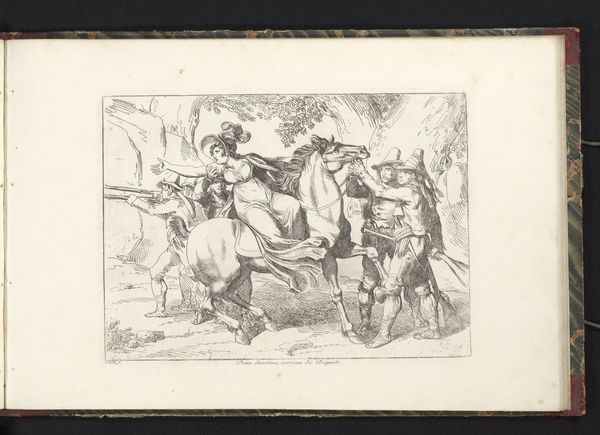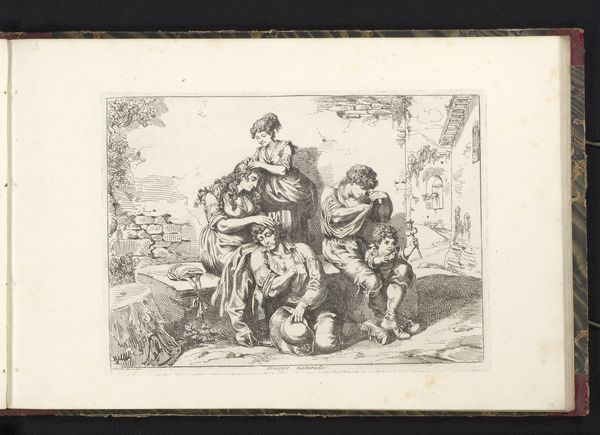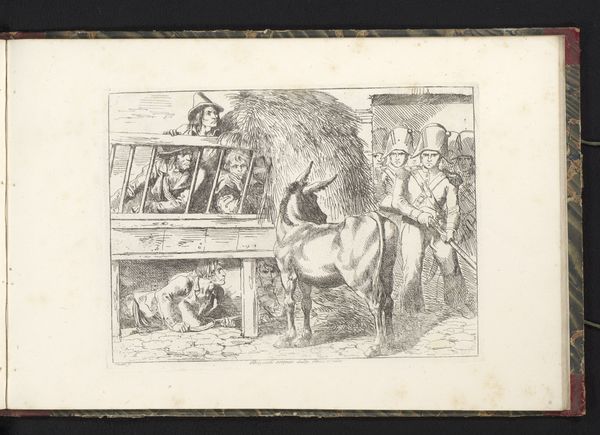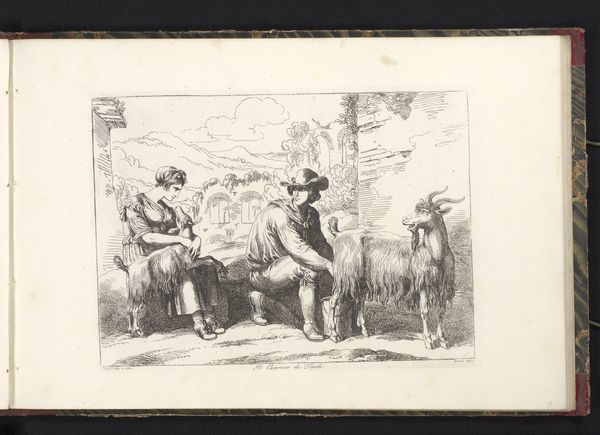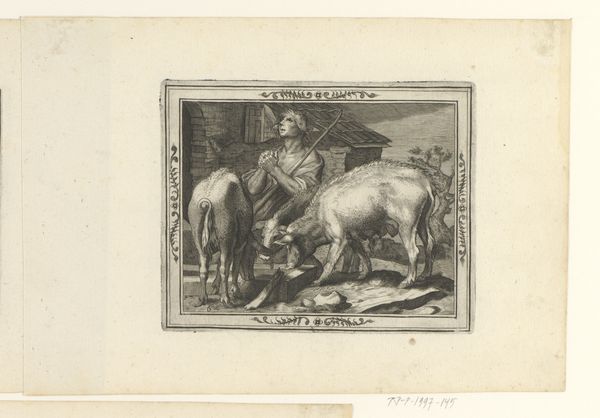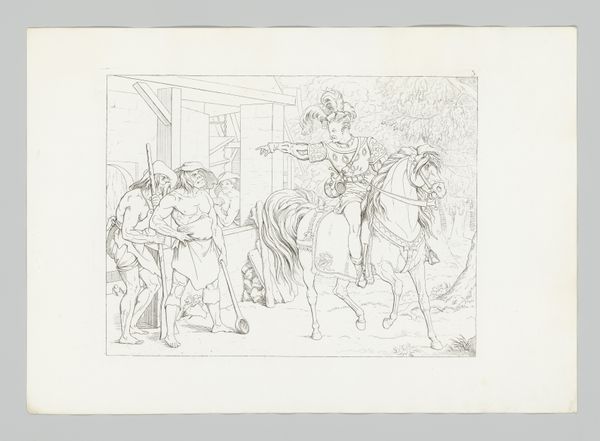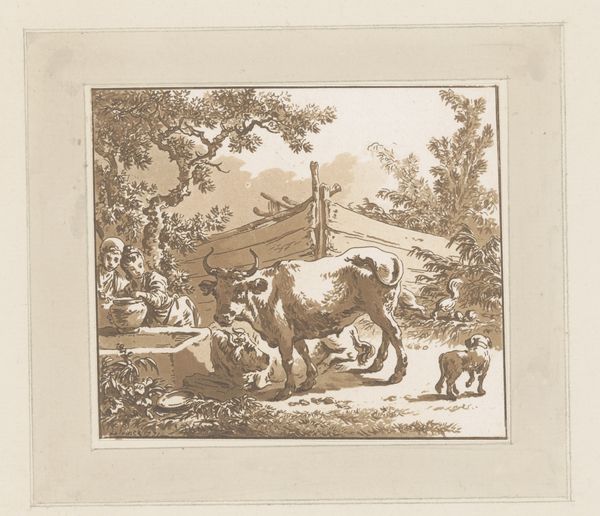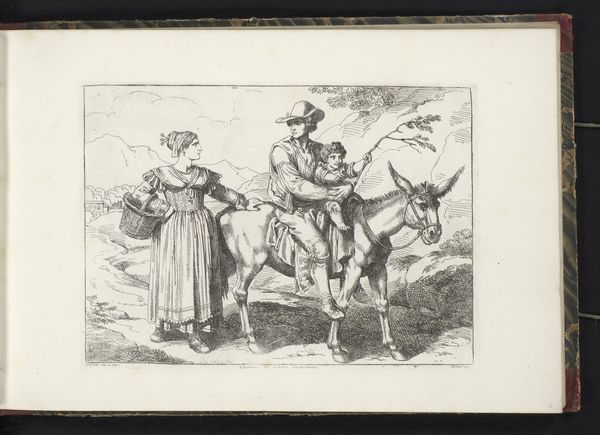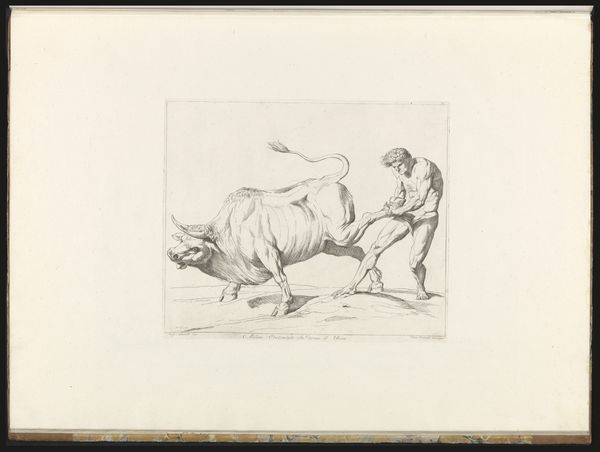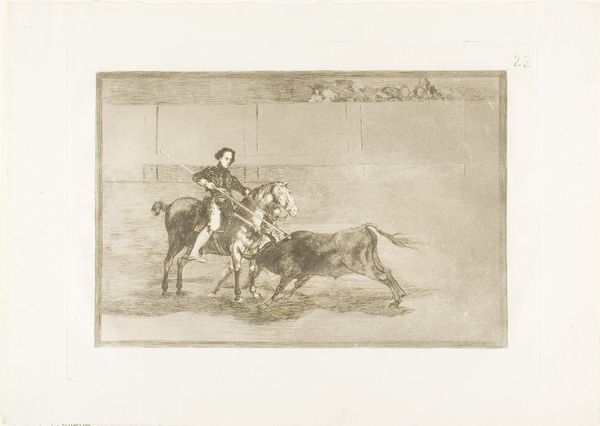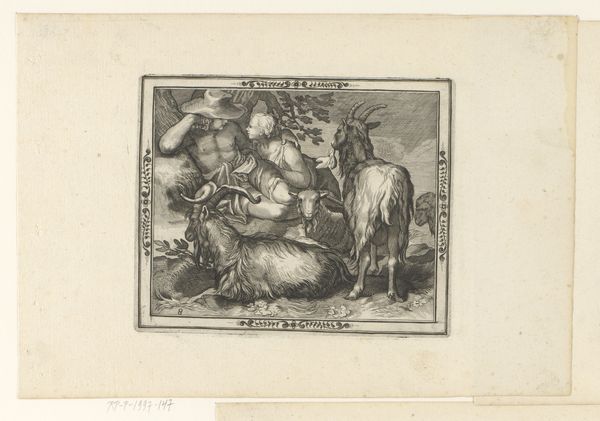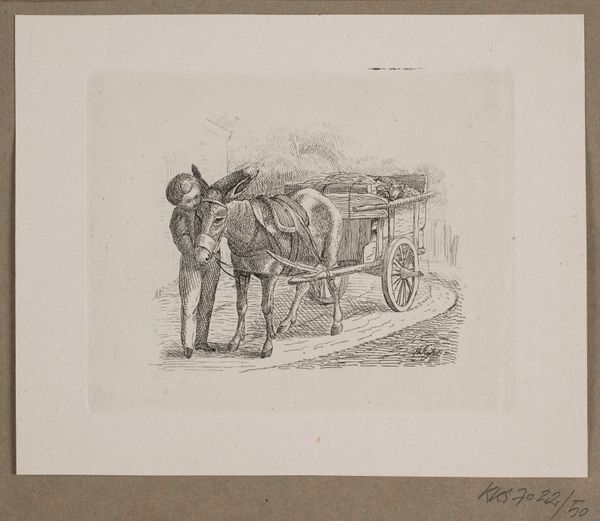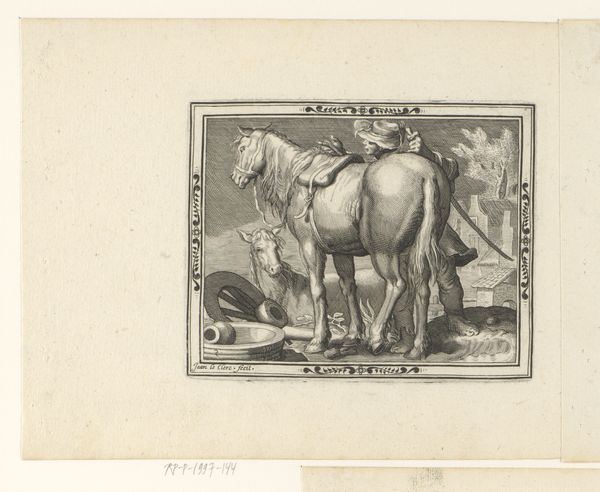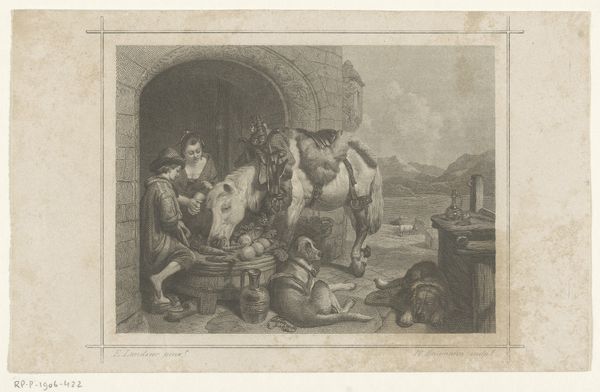
drawing, paper, ink, engraving
#
drawing
#
neoclacissism
#
narrative-art
#
figuration
#
paper
#
ink
#
engraving
Dimensions: height 203 mm, width 279 mm
Copyright: Rijks Museum: Open Domain
Editor: This is "Stier wordt naar het slachthuis geleid," or "Bull being led to the slaughterhouse," a drawing made with ink on paper in 1819 by Bartolomeo Pinelli. The stark lines create a very powerful forward momentum; it feels inevitable. What aspects of the work stand out to you? Curator: The use of line, particularly the contrast between the heavier, more defined lines delineating the figures and the thinner, more suggestive lines used for the background architecture, is quite compelling. Notice also the deliberate echoing of forms—the curve of the bull's horns mirrored in the architectural details behind, creating a visual rhyme. Do you see how that adds to the sense of compositional unity? Editor: I see it now, but I’m wondering, how does the artist’s mark-making shape my interpretation of this drawing? Curator: Consider the varying densities of the cross-hatching. Where does Pinelli choose to intensify the shadows, and what effect does this have on the perceived weight and volume of the bull? This engraving technique offers rich surface play that contributes greatly to our apprehension of forms. The interplay between light and shadow, rendered through this meticulously detailed linear network, is crucial to understanding the artwork. Editor: So, focusing on the internal structure more than its historical context… Curator: Precisely. The forms, the lines, and the balance created contribute directly to its aesthetic quality. A thorough appreciation begins with focused perception of the image itself. Editor: That gives me a new perspective. Thanks. Now I'm appreciating the engraving more. Curator: Indeed. It's in these structural relationships that we find the true strength of the artwork.
Comments
No comments
Be the first to comment and join the conversation on the ultimate creative platform.
